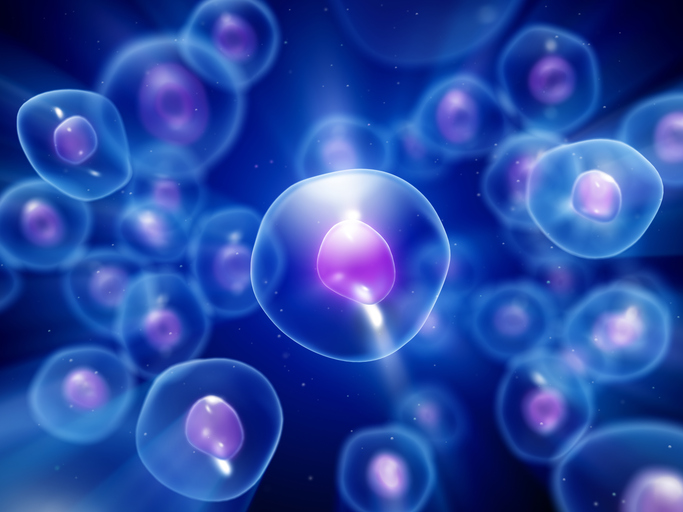5 Tactics To Boost Your Mitochondrial Health & Your Longevity

Okay, friend. I’ve got some important questions for you. They may seem a little personal, and they’re going to require you to be completely honest with yourself. Ready?
- As you’ve gotten older, have you noticed you have less energy and more fatigue? Do you feel like tasks you could once complete without batting an eye are now more physically demanding?
- Have you found your joints don’t quite recover as quickly as they used to? Have you noticed your stamina is a fraction of what it once was? Do you lack the strength and muscle tone of your youth? Let’s be honest… have you noticed the appearance of what seems like a spare tire around your waist?
- Do you experience more brain fog and forgetfulness? Do you find it difficult to concentrate on the task at hand? Have you found a “good night’s rest” is more difficult to come by?
- Does food affect you a bit differently these days? Do you experience more digestive discomfort? Have you noticed you catch colds more often? And when you do, it’s more difficult to bounce back?
If you answered yes to any of the above, you’re not alone. These are all common age-related issues. While they may seem inevitable, the truth is, in many cases, they can be traced back to your mitochondria. (You may remember learning about the mitochondria in middle and high school biology classes?).
Just to jog your memory, mitochondria are known as the “power plants” of all living things, including us. That is, they are the components of our cells responsible for providing energy in the form of a molecule called ATP. In fact, the mitochondria produce about 95% of the body’s energy.
For some perspective, it’s estimated that there are over 30 TRILLION cells in the human body. Each cell may contain hundreds of mitochondria, which are especially prevalent in the brain, heart, and muscles. Both mitochondrial number and function are critical. In the absence of a dense network of efficient mitochondria, our ability to live, breathe, move, be energetic, and live life to the fullest is severely compromised.
The truth is that the traditional view of mitochondria as “power plants” (while accurate) is incomplete. In fact, mitochondrial health and function may very well be the “missing link” or so-called “fountain of youth.” On the other hand, mitochondrial dysfunction is linked to nearly every age-related human health issue—including those I asked about above.

What Causes Mitochondrial Health Issues?
How does mitochondrial function get compromised? Better said, how does mitochondrial dysfunction arise? Well, it’s quite a complex topic that’s being intensely researched. However, science is beginning to unravel the mystery, which appears to arise from:
- An inadequate number of mitochondria
- An inability to provide the necessary materials (e.g., fats, carbs) to mitochondria
- Dysfunction in the electron transport and ATP-synthesis machinery
Since that may sound like a bit of a foreign language, allow me to translate. Going back to our “power plant” metaphor, what this means is that mitochondrial dysfunction results from:
- A reduction in the number of “power plants”
- A “transportation issue” preventing the raw materials from getting into the “power plant”
- A problem with the “assembly line” or an insufficient number of “workers”
Factors Affecting Mitochondrial Health
With that in mind, you may be wondering…what variables influence or accelerate mitochondrial dysfunction? Better yet, is there anything you can do to support mitochondrial health?
The answer is a resounding YES. We’ll dig into them in just a moment. But first, let’s address some of those factors that seem to compromise mitochondrial function:
Persistent, unhealthy levels of inflammation. Interestingly, this is a vicious cycle whereby inflammation impairs mitochondrial function, and subsequent mitochondrial dysfunction elicits inflammation.1
- Chronic stress2
- Poor glycemic control3
- Advanced glycation end-products (AGEs). AGEs, which are “glycotoxins” that can be produced during cooking (e.g., grilling, broiling, frying) and also formed inside the body (typically in line with poor glycemic control or high blood sugar), increase free radical formation, increase oxidative stress, and promote inflammation. Along those lines, they’ve been implicated in mitochondrial dysfunction. As if that weren’t enough, mitochondrial dysfunction is thought to exacerbate the production of AGEs, “fueling the fire” so to speak.4–7
- Sedentary lifestyle8
- Poor nutrition and overeating. The typical Western-style diet, characterized by a high intake of ultra-processed foods, refined grains, added sugars, and poor-quality fats (i.e., high-fat, high-carb “fast food” diet), is notorious for accelerating many negative health outcomes, including mitochondrial dysfunction.9,10
- Insufficient/poor-quality sleep and poor circadian rhythm management. This is, of course, another example of a vicious cycle whereby poor sleep hygiene impairs mitochondrial function. In turn, the ensuing mitochondrial dysfunction adversely affects sleep. Also of note, melatonin, while primarily regarded as a sleep-regulating hormone, is a powerful antioxidant, which is selectively taken up by the mitochondria.11
- Environmental stressors and toxins (e.g., heavy metals)12
Certainly, this is not an exhaustive list, but I think you get the point. Arguably, the common denominator between the factors listed above and mitochondrial dysfunction is oxidative stress.
Perhaps you’ve heard of the Mitochondrial Free Radical Theory of Aging (MFRTA). According to MFRTA, the accumulation of oxidative damage is the main driving force in the aging process.13 While there is some controversy as it pertains to the validity of MFRTA, there is no denying that oxidative damage to the mitochondria impairs mitochondrial health and function. Indeed, it’s a driving factor behind mitochondrial dysfunction.14,15
The irony is that the mitochondria themselves are not just a target of oxidative stress—they are the body’s main source of reactive oxygen species (ROS), which are highly reactive free radicals. That is, a byproduct of mitochondrial energy production is the creation of ROS. This, in turn, can cause oxidative damage to the mitochondria (e.g., mitochondrial membrane, DNA, etc.) leading to mitochondrial dysfunction.

2 Foods Boost Mitochondrial Health
All hope is not lost! What you eat—or don’t eat, as alluded to above—can have a considerable impact on mitochondrial health and function. Given the information provided so far, you may have an idea of what types of foods support mitochondrial health and function.
Plant Polyphenols. Polyphenols are plant-derived compounds with a variety of biological activities and health properties. They are best known for being the most abundant antioxidants found in food. Currently, over 500 different polyphenols have been identified in commonly consumed foods. Most polyphenols have both antioxidant and anti-inflammatory properties. Along those lines, they may have protective effects on mitochondrial functioning.16,17
In addition, certain polyphenols may enhance mitochondrial efficiency and/or stimulate mitochondrial biogenesis, which is science speak for increasing the size and number of mitochondria.18 Here are some of the most noteworthy polyphenols and the foods you can find them in:
- Resveratrol: Grape skins (red wine), peanuts, raspberries, blueberries
- Quercetin: Onions, oranges, bell peppers, snap beans, capers, tea, green vegetables, berries
- Epicatechin: Cocoa, blackberries, tea, apples, peaches
- Kaempferol: Parsley, kiwis, oranges, potatoes, apples, strawberries, grapes, watermelon, onions, broccoli, carrots
- Anthocyanins: This is a broad category of polyphenols found in a variety of fruits, particularly berries (e.g., blackcurrants, blackberries, strawberries), apples, cherries, grapes, plums, red wine, red cabbage, eggplant, red onions, radishes
- Galangin: Oregano
- Fisetin: Strawberries, apples, persimmons, onions
Special Offer:Get MetaboGreens up to 20% OFF (very limited inventory)
Docosahexaenoic acid (DHA). The omega-3 fats DHA and EPA are highly regarded for a wide range of health benefits. Among them, recent research has shown that these key essential fatty acids may have anti-aging properties.19–21
What’s particularly interesting is that EPA, and to a substantially greater extent, DHA are incorporated into the walls of our cells, called cell membranes. Recent research confirms that these omega-3s, particularly DHA, are also incorporated in mitochondrial membranes. And this, my friend, has enormous implications for mitochondrial health and function.22
What’s more, DHA can increase the concentration of a compound in the mitochondrial membranes called cardiolipin, which is unique to mitochondria and essential for optimal mitochondrial function. Considering that depletion of cardiolipin results in severe mitochondrial dysfunction, this has tremendous significance.16,23 Practically speaking, healthy mitochondrial levels of DHA and cardiolipin are critical to make sure there are no “transportation issues” with “raw materials” getting into the mitochondria and to ensure the “assembly line” is running smoothly and efficiently.
The best whole-food sources of DHA are oily fish and seafood. (Plant-based eaters, algae and algal oil will be your best options.) When it comes to choosing fish and seafood, you obviously want options that are rich in these essential fats. However, it’s also important to take into consideration issues like sustainability and heavy metal toxicity. As alluded to above, mercury is an environmental toxin that can damage mitochondria and lead to mitochondrial dysfunction. Along those lines, the best choices include:
- Wild salmon
- Pacific sardines
- Mussels
- Rainbow trout
- Atlantic mackerel
- Oysters
- Anchovies
- Herring

5 Tactics to Boost Mitochondrial Health
In addition to food choices, there are several key tactics that are extremely effective at supporting mitochondrial health and stimulating mitochondrial biogenesis.
1. Exercise. One of the first things you learn in exercise physiology class is that exercise, particularly endurance exercise, increases mitochondrial health in muscle. As you might imagine, this adaptation is one of the primary ways you can improve your aerobic capacity and endurance performance.
We don’t have to get into the nitty gritty details. What’s important to know is that regular exercise is a potent stimulator of mitochondrial biogenesis. On the other hand, the “use it or lose it” mantra holds true. That is, being sedentary provokes a decrease in mitochondrial number and function.8,18
While traditional aerobic exercise, which is indeed effective at increasing mitochondrial content in muscles, is typically the first thing that comes to mind, recent research shows even low-volume, short-duration, high-intensity interval training (HIIT), which involves brief periods of intense effort interspersed with rest intervals, is highly effective at stimulating the “master regulator” of mitochondrial biogenesis (a compound called PGC-1α).24,25
2. Caloric Restriction. From a nutrition standpoint, arguably the most effective means of promoting mitochondrial health, function, and biogenesis is caloric restriction (CR). Indeed, multiple lines of research have shown that CR reliably promotes healthy aging and extends lifespan.
This can be traced back, at least in part, to improvements in mitochondrial size, number, and function. CR protects mitochondria by reducing the production of free radicals. What’s more, CR activates the key anti-aging compounds SIRT1 and AMPK, which are cellular energy sensors that up-regulate mitochondrial biogenesis.18
If you like to eat, and daily caloric restriction, which can involve cutting calories by 30 – 40%, doesn’t sound appealing to you, you might consider experimenting with intermittent fasting (IF). IF may offer similar mitochondrial and longevity benefits. It’s been shown to up-regulate a process called autophagy, which essentially involves “cleaning up” cellular garbage (including damaged mitochondria). As an added benefit, whereas CR typically results in the loss of calorie-burning lean muscle, IF promotes fat loss while retaining valuable lean mass.26
While time-restricted feeding (TRF), which involves limiting daily eating to a short window (e.g., 6 – 8 hours), is the most commonly practiced form of IF, alternate day fasting (ADF) and fast-mimicking diets (FMD) may offer similar, if not greater, benefits. For example, FMD, which entails following a low-calorie, low-protein diet for a 5-day period during a monthly cycle, has been shown to significantly reduce biomarkers for aging, increase regeneration markers, and promote optimal lifespan and healthspan in humans.27,28
3. Ketogenic Diet. Speaking of fasting, the ketogenic diet, or keto for short, essentially simulates fasting from a metabolic standpoint. That is, a hallmark of fasting is that the body switches from a reliance on glucose to an “alternative fuel,” known as ketones. As you might imagine, the ketogenic diet is specifically designed to upregulate ketogenesis, or the body’s production of ketones.
Similar to fasting and CR, keto upregulates important cellular processes, promoting stress resistance and autophagy, which, as you may recall, is a form of “cellular detoxing.”29 Pretty cool stuff! While it can get a little complex, the ketogenic diet also activates key anti-aging compounds, such as PGC1α, AMPK, and SIRT1.29
You don’t have to remember the alphabet soup. What’s important is that these compounds help increase the number of mitochondria (via mitochondrial biogenesis). These compounds are also known as “exercise mimetics.”30 In other words, activating them through the ketogenic diet may offer some of the same beneficial effects as endurance exercise.
What’s more, by its very nature, the ketogenic diet, which is a very-low-carb, high-fat diet, results in significant reductions in blood sugar levels and subsequent improvements in glycemic control. As you may recall from above, poor glycemic control is one of the primary variables contributing to mitochondrial dysfunction.
An additional point to mention is that dysfunctional mitochondria may have an impaired ability to use glucose for fuel (i.e., a “transportation issue” or “assembly line” issue). Along those lines, ketones have the ability to serve as a critical alternative energy source for damaged mitochondria.31
One more thing to mention is that ketones are a very clean, efficient source of energy. By that, I mean that your body can generate more cellular energy from ketones than glucose or fat. That also means when your body metabolizes ketones, it generates fewer ROS. This is important because, as you may recall, oxidative damage is arguably the primary driving factor of mitochondrial dysfunction.
4. Hypo- and Hyperthermia. In addition to the strategies mentioned above, exposure to low temperatures is a key driver of mitochondrial biogenesis, which again refers to increasing mitochondrial number, size, and mass.18 This is often referred to as cold-induced mitochondrial biogenesis. What’s particularly interesting is that this seems to occur preferentially in brown adipose tissue (BAT), also known as “brown fat.”32 Unlike unwanted body and belly fat, BAT is unique in that it burns body fat to produce heat (i.e., thermogenesis). As a result, BAT thermogenesis is currently being investigated as an anti-obesity target.33,34
In addition, research has shown that regularly taking ice-cold baths (known as “cold water immersion,” or CWI) increases markers (e.g., AMPK) of mitochondrial biogenesis in muscles.35 Interestingly, if you want to derive the greatest benefits, CWI should be combined with exercise. In other words, when exercise is performed in cold temperatures or CWI is used as a recovery tool after exercise, mitochondrial biogenesis is enhanced.36
So, if cold therapy can boost mitochondrial health, what about heat exposure? It’s hard to say for certain, but we may be able to speculate about some potential benefits of regular heat therapy, in particular sauna bathing. For starters, during a sauna session, heart rate can increase up to 100 beats/minutes and reach up to 150 beats/minutes. In case you didn’t know, that’s fast! In fact, that’s similar to low- to moderate-intensity exercise.
That’s not to say sauna bathing is a replacement for exercise. But as you’ll recall from above, aerobic exercise is traditionally known as the most potent stimulus to support a dense network of efficient mitochondria. Along those lines, there are multiple documented heart health and longevity benefits seen with sauna bathing (such as reduced risks of cardiovascular disease and all-cause mortality), which are quite similar to those adaptations to regular physical exercise.1
5. Mitochondrial Support Supplements. Of course, dietary supplements can offer additional mitochondrial support and anti-aging benefits. Along those lines, I’m excited to share with you what I like to call my MitoSupport Stack:
- BioTrust Ageless Body®. With Ageless Body, providing unparalleled antioxidant support is the name of the game. In CoQ10, CurcuWIN® (i.e., curcumin), Setria® Glutathione, and Vitamin C, you have a strong cast of antioxidants on your side to protect your mitochondria from ROS and oxidative damage. In addition, CoQ10 is a key component of the mitochondrial electron transport chain. You can think of it as the “foreman” of the “assembly line.”Meanwhile, curcumin not only activates the “master regulator of antioxidant response,” it also defends against mitochondrial toxins and promotes mitochondrial biogenesis. Glutathione, known as the “key survival antioxidant,” has emerged as the main line of defense for the maintenance and repair of mitochondria.
Interestingly, studies have demonstrated low levels of vitamin C in folks with mitochondrial dysfunction while high vitamin C levels have been shown to have an impact on both the number and size of mitochondria.
Finally, Sensoril® Ashwagandha, which is prized for its rejuvenating and energizing effects, not only supports mitochondrial function, it also helps increase stress resilience and lower cortisol. This is significant because chronic stress can generate toxic by-products, promote systemic inflammation, and alter gene expression, ultimately damaging mitochondria and accelerating cellular aging.
- BioTrust IC-5™. As previously discussed, poor glycemic control is a primary contributor to mitochondrial dysfunction. When it comes to improving carb tolerance, IC-5 stands in a class of its own. For example, research-backed ingredients like Berberine and Cinnamon Extract have been shown to significantly reduce the glycemic response when taken prior to a carbohydrate-containing meal.What’s more, Berberine, Cinnamon Extract, Naringin, and Benfotiamine all have noteworthy antioxidant properties, critical for protecting mitochondrial health and function.
Berberine also activates the key anti-aging enzyme AMPK, which, as you may recall, is also a known stimulator of mitochondrial biogenesis.
And if all that wasn’t enough, Benfotiamine has been shown to reduce levels of AGEs, those glycotoxins that are known to accelerate cellular aging and thought to contribute to mitochondrial dysfunction.
I know all that may seem like a lot of complex information to process. The truth is that the body is incredibly intricate. What we hope you walk away with is a greater appreciation for these extremely important “power plants” that reside in every cell in your body and have far-reaching effects. Even more, we want you to gain an appreciation for the fact that many lifestyle factors—the choices YOU make—can have a substantial effect on the size, number, and efficiency of your mitochondria. Ultimately, that effects the function of every cell in your body—and the quality of your life. But worry not, my friend, we’ll be here every step of the way to help you sort it out. So, let us know if you have any questions or feedback.
Here’s to your mitochondrial health!







